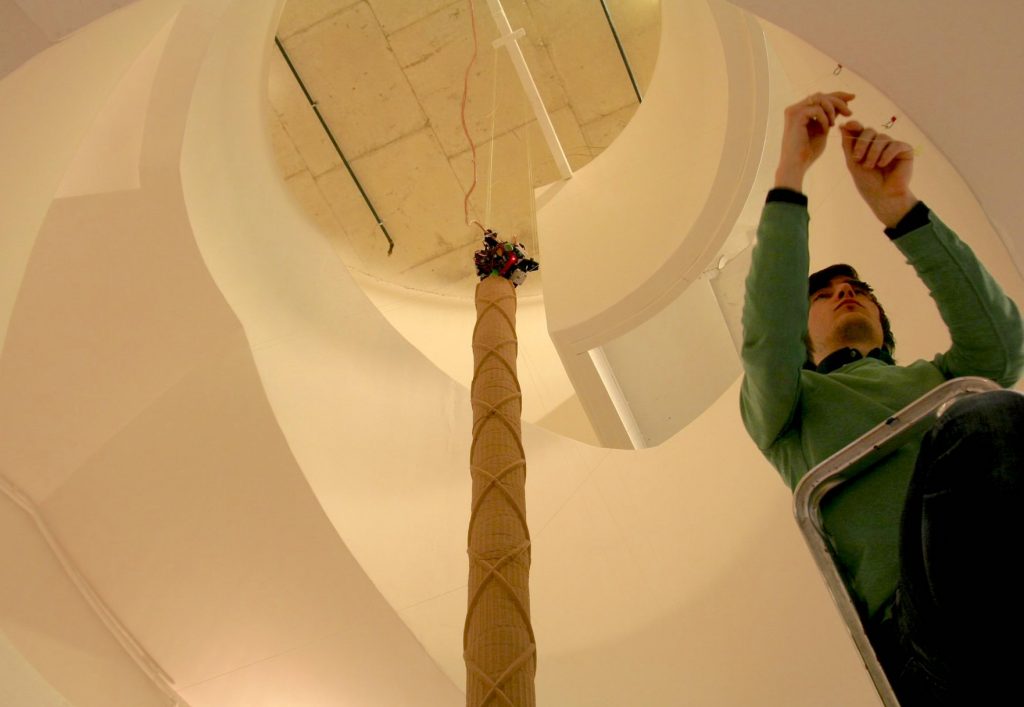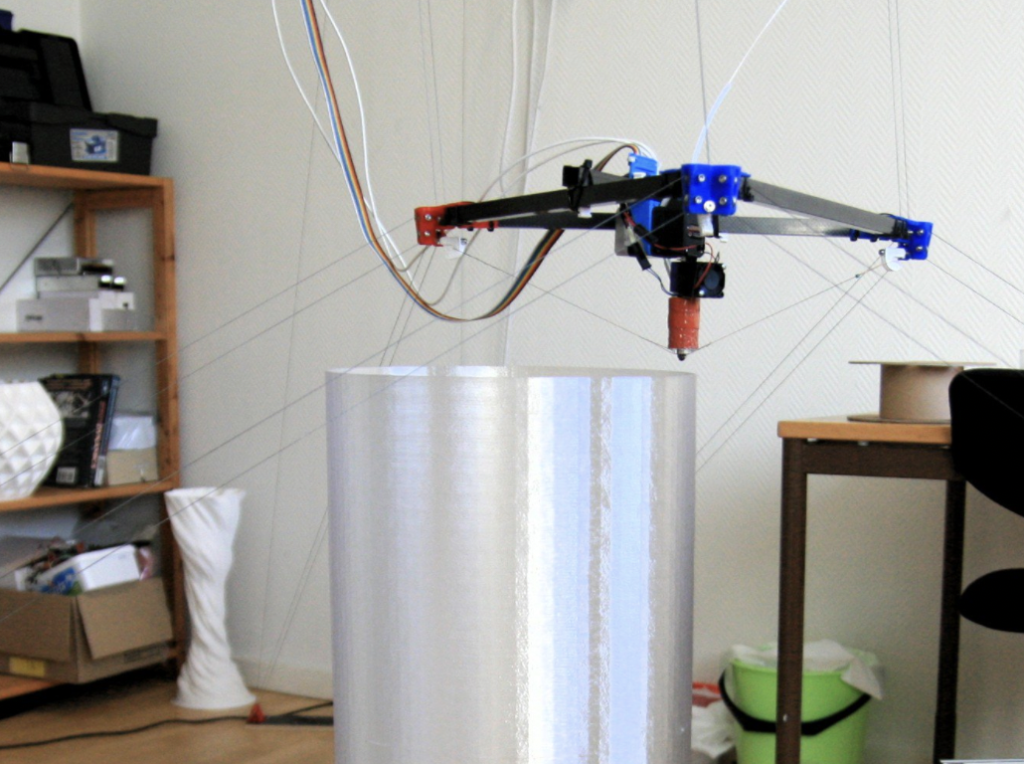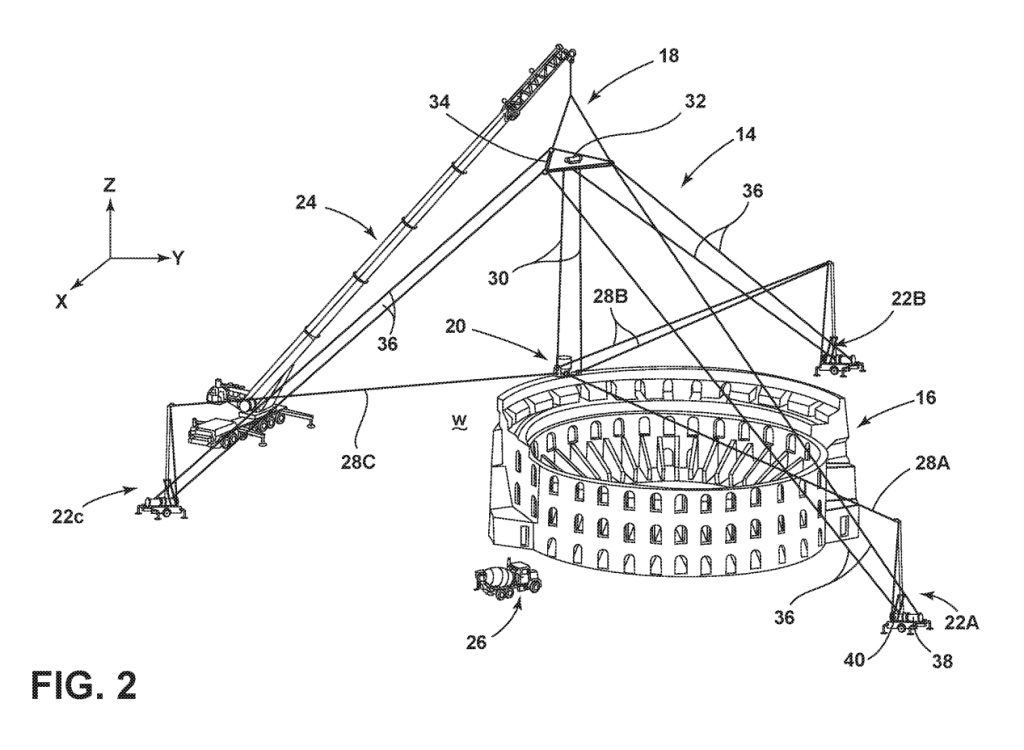Last year we reported how Torbjørn Ludvigsen, the inventor of the HangPrinter, had launched a legal challenge against the U.S. Department of Energy’s (DoE) Oak Ridge National Laboratory’s (ORNL) ‘SkyBAAM’ 3D printing patent.
Now, in an update, it appears the defense against the patent sought by ORNL has succeeded. Ludvigsen writes, “[USPTO has] rejected all the patent’s original claims. They accepted a narrower version of them.”
The case goes back to 2014 when the HangPrinter, an open-source FFF delta-style 3D printer that operates without a frame, was first publicized following Ludvigsen’s work with the RepRap project. Fast-forward to January 2022, when a patent application from 2018 was approved for Sky Big Area Additive Manufacturing or ‘SkyBAAM’ technology.
In October 2022, Ludvigsen submitted an ex parte reexamination request to the US Patent and Trademark Office (USPTO), sending their analysis and requesting that ORNL’s patent be reexamined. In January 2023, the application for reexamination was granted, with the USPTO agreeing that Ludvigsen’s prior art and analysis raised a new question of patentability.

A brief history of the HangPrinter patent battle
The ORNL is administered, managed, and operated as a federally funded research and development center. In early 2022, a team of engineers at ORNL had their application to patent their SkyBAAM technology approved by the USPTO. SkyBAAM employs a cable-hoisted extruder to 3D print large-scale structures.
ORNL’s patent quickly drew criticism from open-source advocates such as Dr. Joshua Pearce and RepRap Founder Dr. Adrian Bowyer. In their criticism of the SkyBAAM patent, both Pearce and Bowyer highlighted the similarities between SkyBAAM and the HangPrinter.
Following a successful crowdfunding campaign which raised 196,696 Swedish Kronor, Ludvigsen was able to hire legal representation and successfully challenge ORNL’s patent with the USPTO. In a recently published blog post, Ludvigsen shared that the USPTO largely agreed with his challenge, rejecting the original claims of ORNL’s patent, and accepting revised claims which do not cover any of the existing HangPrinters.
“I was pleasantly surprised by just how narrow the claims had become,” commented Ludvigsen. “This patent case was not meant to expel for-profit companies from the community. It was fought to make room for more of them by making sure there’s plenty of low hanging fruit left that everybody and nobody owns.”
Ludvigsen added that he is looking forward to expanding “the world of open source by continuing to give my HangPrinter developments as gifts to everyone, and by keeping the community open.”

The SkyBAAM controversy
ORNL’s original SkyBAAM patent outlined the design for a concrete 3D printer with a nozzle mounted to a series of pulleys. These pulleys were designed to be controlled by three or more base stations, allowing the nozzle to be deployed in mid-air. Within this patent, two base stations were designated to control movements along the X and Y axes, with the third used to provide tension control.
ORLN’s SkyBAAM team claimed that their design offered cost, lead-time, and efficiency benefits, without requiring “extensive site preparation,” something which has “prevented on-site additive manufacturing from becoming commercially viable.”
However Ludvigsen, along with Bowyer and Pearce, soon began to question the validity of the SkyBAAM patent. First discussed online in 2014, the HangPrinter significantly predates the SkyBAAM. Featuring a ceiling suspended printhead, the HangPrinter was designed to make large-scale free form 3D printing more accessible.
Speaking to 3D Printing Industry last year, Dr. Bowyer stated that at least 13 of the SkyBAAM’s 20 claims are also present in the HangPrinter. Bowyer also highlighted how the ORNL patent reflects a wider 3D printing trend, whereby “trolls are attempting to patent things that are already established in the open-source community,” in a way that “inhibits innovation in every industry.”
Ultimately, Bowyer called the patent “invalid,” given that “none of the claims are novel” and the SkyBAAM’s features can be seen in the HangPrinter.
Pearce, an Academic Engineer at Western University and developer of a sub-$1,000 PEKK 3D printer, also pinpointed the similarities between the two designs, arguing that the ORNL patent should never have been awarded. “If you read the patent, the problem they were trying to solve was how to get rid of the gantry systems for large building-style 3D printing. They did this by copying the open-source Hangprinter concept, only scaling it up and using concrete instead of plastic.”
“Patents are supposed to be for non-obvious inventions,” added Pearce, who claimed that the tweaks made for the SkyBAAM would be obvious to “anyone even remotely familiar with construction and the Hangprinter concept.”

Ludvigsen’s crowdfunding efforts
To challenge ORLN’s SkyBAAM patent, Ludvigsen launched a ‘Help Keep Hangprinter Free’ crowdfunding campaign to pay for legal expenses. Initially aiming to raise 600,000 Swedish Kronor (around $61,000), the 196,696 Swedish Kronor Ludvigsen received was still “way more attention and funding” than he had expected.
Through this funding, and thanks to support from the Electronic Frontier Foundation (EFF) and the Public Interest Patent Law Institute (PIPLUIS), Ludvigsen hired an IP lawyer for 59,906 Swedish Kronor ($5,500 USD).
“This lawyer did absolutely everything possible to invalidate or severely narrow the patent though an ex parte reexamination process. Including clearing up the misunderstanding that prior art needed to be more than a year older than the patent application,” stated Ludvigsen. “This improved the claims mapping considerably. He wrote the final analysis and handled the endless back- and-forth with the USPTO while patiently answering my questions along the way.”
Having also paid 35,351 Swedish Kronor ($3,150) in USPTO fees, Ludvigsen has confirmed that he still has 95,000 Swedish Kronor, or $9,000 USD, left over from the crowdfunding campaign. Ludvigsen states that these funds will be used in his ongoing mission to “Keep HangPrinting Free,” and to “make sure we’re better prepared next time around.”
The legal challenge
Whilst Ludvigsen states that “all claims were rejected,” and the USPTO’s analysis was “largely in line with ours,” he does note that through the reexamination procedure “the patent holder gets the last word.” As such, ORNL’s request for the creation of a “narrowed down” patent was accepted.
“None of the existing Hangprinters are covered by the revised claims. They now cover only one specific design path, building upon Hangprinter,” explains Ludvigsen.
Ultimately, Ludvigsen states that the new claims are “easy to work around” and largely undesirable, with the revised patent closing off “an entirely uninteresting design path.” Moreover, the narrowed patent only covers 3D printers that possess all the outlined features at the same time.
“If you find yourself wanting to implement 1 or 2 or 3 of those features, then you don’t have to worry about the patent. Make a slight deviation, a tiny angle or something, and you can probably have all 4,” explained Ludvigsen. “This is in contrast to before, when you couldn’t have even 1 of those features. If an anchor was considered to do “tension control”, then even existing Hangprinters, and almost any related machine design, was covered by the old patent.”
Subscribe to the 3D Printing Industry newsletter to keep up to date with the latest 3D printing news. You can also follow us on Twitter, like our Facebook page, and subscribe to the 3D Printing Industry Youtube channel to access more exclusive content.
Are you interested in working in the additive manufacturing industry? Visit 3D Printing Jobs to view a selection of available roles and kickstart your career.
Featured image shows Torbjørn Ludvigsen’s Hangprinter. Photo via Torbjørn Ludvigsen.


